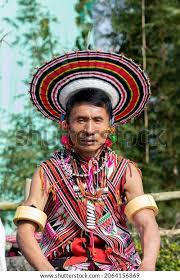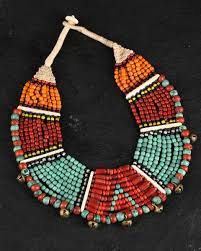
Art Integrated Project On Nagaland For Class 9th And 10th
Introduction
Step into the captivating realm of Nagaland! Tucked away in the northeastern corner of India, Nagaland is a state that weaves together a rich tapestry of age-old cultural traditions with a modern, vibrant spirit. In this educational adventure crafted especially for 9th and 10th-grade students, we are set to embark on a remarkable expedition into the heart of Nagaland. We’ll uncover its diverse landscapes, immerse ourselves in its lively festivals, delve into its time-honored customs, and explore how art plays a pivotal role in expressing its unique cultural identity. As we journey deeper, you’ll not only develop a profound admiration for Nagaland’s heritage but also have the chance to channel your creativity through various artistic forms. Get ready for a rewarding and artistic odyssey through the soul of Nagaland!
Geography and Demographics
Nagaland’s landscape and demographics serve as the bedrock upon which its rich culture and way of life are built. In this section, we’ll delve into various facets of Nagaland’s topography, climate, population, ethnic diversity, and its significant cities and districts.
Location and Borders
Nagaland is nestled in the northeastern expanse of India, and its boundaries touch several states and countries, including:
- Assam to the west: To the west, Nagaland shares its border with the state of Assam.
- Arunachal Pradesh to the north: The northern frontier of Nagaland is defined by Arunachal Pradesh.
- Myanmar (Burma) to the east: To the east, Nagaland has an international boundary with Myanmar.
- Manipur to the south: Down south, Nagaland’s border merges with Manipur.
Topography and Climate
Nagaland’s terrain offers a diverse panorama, ranging from verdant hills to deep valleys. The state enjoys a temperate climate due to its elevation. Key features include:
- Hilly Terrain: Nagaland’s rugged hills and mountain ranges, including the imposing Patkai Range, define its landscape.
- Climate: The state revels in a moderate climate marked by distinct seasons – summer, monsoon, autumn, and winter. Summers bring warmth, while winters can be pleasantly chilly.
- Monsoon Rainfall: The region experiences substantial monsoon rainfall, vital for its agriculture.
Population and Ethnic Diversity
Nagaland is a mosaic of diverse communities, primarily composed of indigenous Naga tribes. Essential facets include:
- Ethnic Diversity: The state is a melting pot of various Naga tribes, each with its own language, customs, and traditions. Prominent tribes include the Angami, Ao, Sema, Kuki, and many more.
- Languages: While Nagamese is the lingua franca for inter-tribal communication, each tribe boasts its own unique language and dialects.
- Cultural Significance: Nagaland’s cultural landscape thrives on this diversity, with each tribe adding its own vibrant hues to the tapestry through customs and festivals.
Major Cities and Districts
Nagaland is administratively divided into several districts, each bearing its own distinct character. Notable among them are:
- Kohima: As the capital city of Nagaland, Kohima boasts historical significance, particularly in the memory of the Battle of Kohima during World War II.
- Dimapur: Nagaland’s largest city, Dimapur, is a bustling commercial center and a crucial transportation hub.
- Mokokchung: Celebrated for its rich cultural heritage and lively festivals, Mokokchung stands as a prominent town in Nagaland.
- Tuensang: This district is renowned for its breathtaking natural beauty and the diverse tapestry of Naga tribes that call it home.
Culture and Traditions
Nagaland’s culture and traditions form an intricate tapestry, deeply woven into the fabric of its diverse tribal communities, lively festivals, traditional garments, exquisite jewelry, and captivating music and dance forms. In this section, let’s delve into these elements that lend Nagaland its distinctive cultural identity.
Tribal Communities
Nagaland boasts a rich spectrum of tribal communities, each with its unique identity, language, and customs. Among the prominent Naga tribes are:
- Angami: Revered for their valor and warrior heritage.
- Ao: Celebrated for their agricultural practices and contributions to Naga literature.
- Sema: Known for their vibrant cultural traditions and adherence to age-old practices.
- Konyak: Famed for their historical headhunting legacy and intricate facial tattoos.
These tribes, along with others, contribute to the kaleidoscope of Nagaland’s culture, each offering its distinct traditions, festivals, and dialects, enriching the state’s cultural diversity.
Festivals and Celebrations
Nagaland is often hailed as the “Land of Festivals” due to its vibrant celebrations throughout the year. Some of the most prominent festivals and celebrations include:
- Hornbill Festival: Held in December, this extravaganza showcases the diverse Naga tribes’ culture, crafts, music, and culinary delights.
- Sekrenyi Festival: Observed by the Angami tribe, it signifies the conclusion of the agricultural season with time-honored rituals and sumptuous feasting.
- Aoling Festival: Celebrated by the Konyak tribe, it welcomes spring with enchanting dances, melodious songs, and joyful feasts.
- Moatsu Festival: Among the Ao tribe, this festival revolves around singing, dancing, and merrymaking to honor the deity of fertility.
- Tuluni Festival: Celebrated by the Sumi tribe, it marks the post-harvest season with feasting, melodious songs, and spirited dances.
These festivals serve as both a splendid showcase of Naga culture and a platform for artistic expression and communal bonds.
Traditional Attire and Jewelry
Naga traditional attire is a living embodiment of their cultural heritage and craftsmanship. Key elements of traditional attire include:
- Shawls: Elaborately woven and vividly colored shawls stand as a prominent feature of Naga clothing, symbolizing tribal identity.

- Headgear: Various tribes exhibit distinctive headgear, often adorned with feathers, animal horns, or symbolic embellishments.

- Jewelry: Naga jewelry encompasses necklaces, bracelets, and earrings, meticulously crafted from beads, shells, and metal, and cherished for their cultural significance.

These traditional garments and adornments are donned with pride during festivals and special occasions.
Music and Dance Forms
Music and dance are the beating heart of Nagaland’s culture and rituals, with distinctive aspects including:
- War Dances: Traditional war dances feature intricate footwork, portraying tales of battles and heroism.
- Folk Songs: Folk songs find their place in various occasions, narrating stories, legends, and tribal history.
- Musical Instruments: Traditional instruments like log drums, bamboo flutes, and gongs are skillfully wielded to create melodious harmonies.
- Contemporary Fusion: Modern Naga musicians frequently blend traditional melodies with contemporary elements, giving rise to a distinctive musical fusion.
History and Heritage
Historical Background: Nagaland’s history unfolds as a complex tapestry of events, with British colonialism playing a pivotal role in its shaping. During the late 19th and early 20th centuries, the British made their presence felt in the Naga Hills. Their objective was to consolidate power and exert control over the Naga tribes, which triggered resistance and conflicts. This period of colonial rule left an indelible mark on the Naga people, marking the initiation of external influence on their way of life.
Naga Tribes’ Unique History: The Naga tribes stand out for their resolute resistance to foreign rule, embodying a warrior culture deeply rooted in their heritage. Their warrior ethos found expression through the practice of headhunting, where warriors collected the heads of their adversaries as trophies. Although gruesome, this act symbolized bravery and valor within Naga society. As circumstances evolved and Christianity began to influence the region, headhunting gradually ceased, but it remains a testament to the formidable history of the Naga tribes.
Significance of Oral Tradition: Oral tradition holds paramount importance in safeguarding the history and narratives of the Naga people. Many Naga languages lack a written script, necessitating the transmission of knowledge, legends, and cultural legacy through generations via oral storytelling. Elders play a pivotal role in this process, ensuring the continuous passage of the rich history and traditions of the Naga tribes to younger generations.
Preservation of Heritage: In contemporary times, concerted efforts have been made to preserve Naga heritage and culture. Museums, cultural centers, and documentation projects have been established to safeguard artifacts, customs, and stories of the Naga people. These initiatives serve the dual purpose of protecting the heritage and fostering awareness and appreciation of Naga culture among the younger generation and visitors hailing from diverse corners of the world.
Arts and Crafts
Naga Artistic Traditions:
In Nagaland, a treasure trove of artistic traditions flourishes, encompassing painting, sculpture, and textile art. These artistic expressions find their roots in the wonders of nature, tribal folklore, and the rhythms of daily life. Artists employ vibrant colors and intricate designs to encapsulate the very essence of Naga culture.
Bamboo and Cane Craft:
The artistry of bamboo and cane craft occupies a central place in Naga culture, fulfilling both utilitarian and aesthetic roles. Skillful artisans craft baskets, furniture, musical instruments, and exquisite bamboo and cane creations that bear testimony to the artistic mastery of the Naga people.
Wood Carving:
Wood carving stands as another revered art form in Nagaland. Artisans sculpt intricate motifs into wooden objects, often laden with profound symbolic significance. These carvings embellish homes, ceremonial items, and sculptures, thus preserving the essence of Naga culture through the finesse of woodwork.
Handwoven Textiles:
Handwoven textiles occupy a sacred niche within Naga culture. Each tribe boasts its distinct weaving techniques, patterns, and designs. Shawls, sarongs, and various textiles not only serve as garments but also communicate tribal identity and narratives through their motifs and hues. These woven treasures are not just fabric; they are living repositories of Naga heritage and stories, woven thread by thread.
Cuisine
Naga Food Culture:
Nagaland’s cuisine serves as a mirror reflecting its profound cultural legacy and the abundance of locally available ingredients. The traditional Naga diet centers on three key elements:
1. Rice: Rice takes center stage and forms the foundation of most Naga meals.
2. Meat: Meat, with a particular emphasis on pork and chicken, occupies a prominent position in Naga culinary traditions.
3. Vegetables: Locally cultivated vegetables, including bamboo shoots, yam, and an array of leafy greens, are integral to Naga cuisine.
Traditional Recipes:
Allow me to introduce you to two beloved Naga dishes:
– Smoked Pork with Bamboo Shoots: This delectable dish combines tender pieces of smoked pork with bamboo shoots, elevated by the fiery kick of Naga chili peppers, delivering a tantalizingly spicy delicacy.
– Fish Curry: Freshly caught fish takes center stage in this dish, often cooked with ingredients such as fermented bamboo shoots, mustard greens, and a symphony of indigenous spices, creating a unique fusion of flavors.
Ingredients and Spices:
Naga cuisine is celebrated for its deployment of distinctive ingredients and spices, including:
Raja Mircha: The notorious Naga chili, renowned for its fiery spiciness, adds a fiery zest to many dishes.
Fermented Bamboo Shoots: These provide a unique tangy flavor that characterizes numerous Naga culinary creations.
Local Herbs and Greens: Wild herbs and greens are frequently enlisted to infuse dishes with distinct flavors and enhanced nutrition.
Food Preparation Techniques:
Traditional Naga culinary artistry employs an array of techniques, including:
Fermentation: This method takes precedence in the preparation of dishes like bamboo shoot curry and fermented soybean chutney.
Smoking: Smoking is employed to preserve meats and fish while imparting them with a distinctive smoky essence.
Boiling: Boiling is a common approach for preparing various Naga delicacies, ensuring flavors are both preserved and enhanced.
Biodiversity and Environment
Nagaland’s Flora and Fauna:
Nagaland’s vibrant ecosystems cradle a multitude of plant and animal species. The state stands as a sanctuary for various endangered and endemic species, boasting the illustrious Blyth’s tragopan as its state bird and hosting the lively Hoolock gibbons. Verdant forests, enchanting meadows, and serene wetlands contribute to the state’s opulent biodiversity.
Conservation Efforts:
Nagaland is fervently engaged in conservation endeavors to safeguard its unique flora and fauna. These dedicated efforts encompass:
- Protected Areas: The establishment of protected areas serves as a sanctuary for countless species, allowing them to thrive undisturbed.
- Sustainable Forestry Practices: Advocacy for sustainable forestry practices ensures the preservation of crucial habitats.
- Wildlife Conservation Programs: Initiatives dedicated to wildlife conservation strive to protect the state’s remarkable creatures. Notably, the Amur Falcon conservation project exemplifies community-led initiatives to shield migratory birds.
Role of Indigenous Knowledge:
Indigenous knowledge is a cornerstone of sustainable environmental stewardship in Nagaland. Local communities possess profound insights into their ecosystems and the medicinal attributes of indigenous flora. Their time-honored practices bolster ecosystem preservation and the sustainable utilization of natural resources.
Eco-Tourism:
Nagaland beckons with its pristine natural beauty and unique wildlife, making it an eco-tourism haven. Eco-tourism initiatives open doors for travelers to delve into the state’s biodiversity while simultaneously advancing conservation and supporting local communities. These endeavors not only generate income but also cultivate awareness about the imperative need for environmental preservation. Nagaland’s enchanting landscapes offer not only glimpses into nature’s wonders but also the opportunity to participate in its protection.
Contemporary Nagaland
Socio-Economic Development:
In recent years, Nagaland has embarked on a transformative journey of socio-economic development. The state has witnessed notable advancements in infrastructure, particularly in road networks and connectivity, facilitating increased mobility and trade. This diversified economy now embraces sectors such as agriculture, horticulture, and tourism, bolstering its overall growth.
Education and Literacy:
Education and literacy have emerged as cornerstones of modern Nagaland. The state has made commendable progress in expanding access to quality education, resulting in improved literacy rates. Education not only empowers the youth but also equips them with the skills and knowledge essential for navigating a rapidly evolving world.
Challenges and Opportunities:
Nagaland grapples with its share of challenges and opportunities on the path to progress:
- Infrastructure Development: Addressing infrastructural gaps, particularly in remote and underserved areas, remains a significant challenge, necessitating continued investment and development.
- Balancing Growth and Conservation: Striking a delicate balance between economic growth and environmental preservation poses an ongoing challenge. It’s imperative to ensure that development efforts are sustainable and environmentally responsible.
- Sustainable Development: Nagaland stands poised for sustainable development, capitalizing on opportunities in eco-tourism, which can both stimulate economic growth and nurture the preservation of its distinctive culture and heritage.
Conclusion
In this comprehensive exploration of Nagaland, we embarked on a captivating journey through the heart of India’s northeastern gem. Nagaland, a land of enchanting landscapes, diverse cultures, and a history imbued with resilience and tradition, unfolded before us.
Our project, thoughtfully designed for students of class 9th and 10th, became a conduit for delving into the multifaceted facets of Nagaland. It underscored the profound role of art as a medium to both appreciate and express the cultural wealth that resides within this remarkable state.
Our journey commenced with a deep dive into Nagaland’s geographical and demographic landscape. We understood its location, its borders that connect with neighboring states and countries, its topography, climate, and the rich tapestry of people that call it home. The major cities and districts came alive, each with its unique character and historical significance.
Moving forward, we immersed ourselves in Nagaland’s vibrant culture and traditions. The tapestry of tribal communities, their spirited festivals, the intricate traditional attire and jewelry that tell stories of identity, and the rhythmic music and dance forms that celebrate life’s joys and challenges.
Our expedition led us through the annals of Nagaland’s history and heritage. We traced its path from the colonial era to contemporary times, discovering the indomitable spirit of Naga tribes, the significance of oral traditions, and the commendable efforts to preserve their heritage for future generations.
The artistic realm of Nagaland enthralled us as we explored traditional art forms, including the expressive world of painting, the mastery of sculpture, and the beauty of textile art. We marveled at the craftsmanship displayed in bamboo and cane products, wood carving’s intricate motifs, and the enduring tradition of handwoven textiles that carry the soul of Nagaland.
We savored the cultural flavors of Nagaland through its cuisine, savoring traditional dishes that tantalized the taste buds. We explored the unique ingredients and spices that define Naga cuisine and learned about time-honored food preparation techniques that carry the essence of the region’s heritage.
In our journey through Nagaland’s biodiversity and environment, we encountered the state’s rich flora and fauna, celebrated conservation efforts, and acknowledged the invaluable role of indigenous knowledge in safeguarding its ecosystems. We glimpsed the potential for eco-tourism, a sustainable path that benefits local communities and raises awareness about the imperative need for environmental conservation.
In the realm of contemporary Nagaland, we witnessed the state’s impressive strides in socio-economic development, access to education and literacy, and identified the challenges and opportunities that lie ahead.
As we conclude this illuminating journey, let us carry forward the knowledge and appreciation gained from this project. Let us continue to explore and celebrate the rich tapestry of cultures that make our world beautifully diverse. Nagaland, with its rich heritage and promising future, serves as an inspiring testament to the harmonious coexistence of tradition and modernity and the enduring spirit of its people.
Certificate
Certificate of Completion
This is to certify that
[Your Full Name]Has successfully completed the
Art-Integrated Project on Nagaland
for Class 9th and 10th
Presented on [Date of Presentation]
This project represents a commendable effort in exploring the cultural, historical, and artistic aspects of Nagaland, demonstrating a deep understanding of the subject matter and an exemplary display of creativity through various art forms.
Congratulations on your dedication and commitment to this project. Your journey through Nagaland’s vibrant culture and traditions has enriched your knowledge and artistic expression.
[Signature of Teacher/Instructor] [Name of Teacher/Instructor] [School Name] [Date]In order to download the PDF, You must follow on Youtube. Once done, Click on Submit
Follow On YoutubeSubscribed? Click on Confirm
Download Art Integrated Project On Nagaland For Class 9th And 10th PDF






